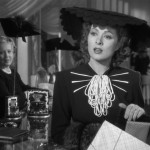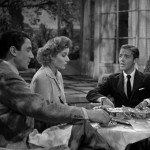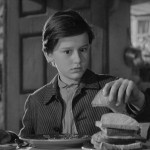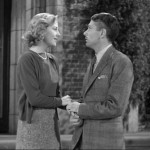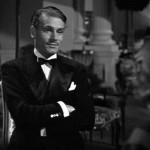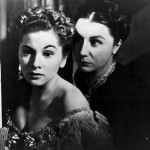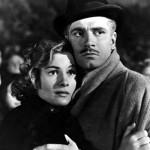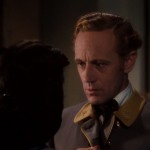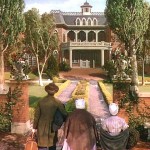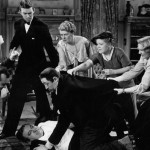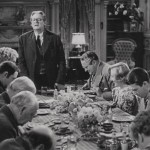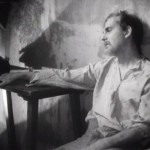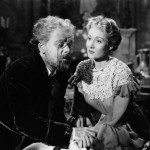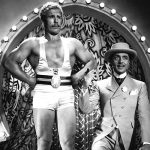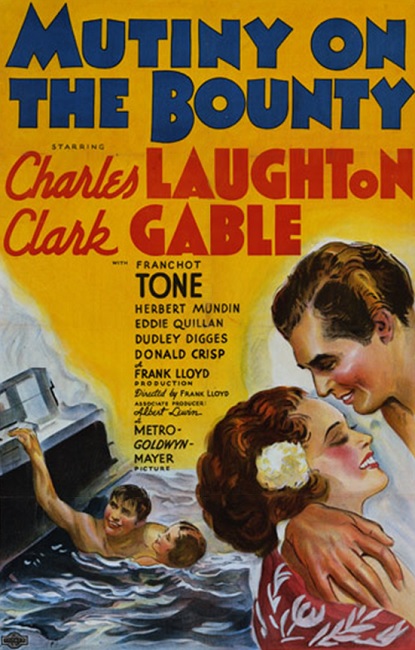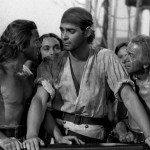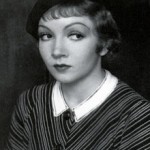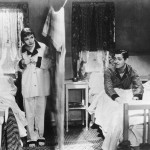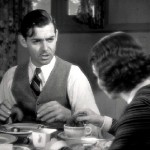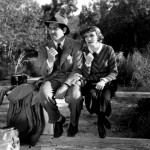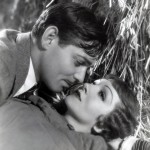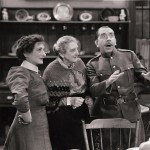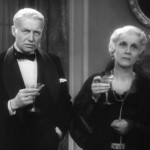

Mrs. Miniver – 1942
Here we have another war-time drama, this one dealing with World War II in rural England. In fact, it was so relevant for its time and was such an inspirational film, President Roosavelt used it as a morale-builder for the American people, as the United States had just entered the conflict. The initial filming was finished before the attack on Pearl Harbor, but once the America joined the war, certain scenes were re-filmed with stronger anti-German and pro-British sentiments.
Mrs. Miniver is the title character of the film, played my Greer Garson. From the very beginning, she appears to be the perfect wife and mother. Her husband, Clem Miniver, played by Walter Pidgeon (who also happened to be in the previous year’s Academy Award Best Picture winner) is a successful architect, and they appear to have the perfect life. They have no worries, plenty of money, and a beautiful home and family. But then the war comes and their charmed lives are threatened by the horrors of the World War.
As I watched I was, at first, a little disappointed by Mrs. Miniver’s character. I thought she had a fairly weak personality. She did very little to actively move the plot along. Everything happened to her or around her and she simply reacted. Even when a wounded German fighter pilot parachutes into her yard and holds her at gun-point, she does what she is told, giving him food and water, until the soldier passes out from his injuries. Then she picks up his gun and calls the police.
But upon further reflection, I realize that her character displayed an incredibly brave, stiff upper-lip in the face of danger. It is a very British trait. Really, what else could she have done in that situation? She shows courage under pressures that would make most people shudder with fear. Even with her husband gone for nearly a week, assisting with the Dunkirk Evacuation, and her son, a British Fighter Pilot engaging the enemy in the air, she remains calm and brave, waiting for them to return. Yes, Garson did a fine job portraying courage under pressure. In fact, Garson won the Academy Award for Best Actress for the role.
Interesting note: Garson’s acceptance speech at the Awards Ceremony was the longest acceptance speech in Academy Award history, coming in at five-and-a-half minutes. Shortly thereafter, acceptance speeches were limited to forty-five seconds.
Now, the real emotional gravity of the film was in Mrs. Miniver’s son’s story line. Vin Miniver is the family’s eldest boy, played by Richard Ney. Shortly before the start of the war, he meets and falls in love with young Carol Beldon, played by Teresa Wright. She is beautiful and intelligent, and I loved watching her. Her character was just lovely and pleasant. Mr. and Mrs. Miniver are happy to welcome her into their family.
But war is never fair. I kept expecting Vin or even Clem to be killed in action. I was stunned when the tragedy happened, and it was Carol who was shot during a German air raid, only two weeks after her marriage to Vin. The fact that she was so young and vivacious made her death that much more shocking and emotionally devastating. I really felt for Mrs. Miniver, holding her daughter-in-law’s body and finally losing her iron British composure, breaking down into sobbing tears.
The final scene is a powerful sermon given by the local vicar, played by Henry Wilcoxon. This is what really inspired Roosevelt to use the film as a morale-builder to a nation at war. He ordered the film rushed into theaters as a propaganda film. With the crumbled wall of the church behind him, he preaches, “It is the war of the people, of all the people. And it must be fought not only on the battlefield but in the cities and in the villages, in the factories and on the farms, in the home and in the heart of every man, woman and child who loves freedom.” The Minivers and the rest of the congregation then sing loudly and proudly “Onward Christian Soldiers.” All this, as the camera pans up to show the bombed-out ceiling of the church. You can’t get much more inspirational than that.
Interesting note: At the end of the closing credits, as the words “The End” faded from the screen, but before the music ended, the following admonishment unexpectedly appeared on the screen: “AMERICA NEEDS YOUR MONEY. BUY DEFENSE BONDS AND STAMPS EVERY PAYDAY.”

